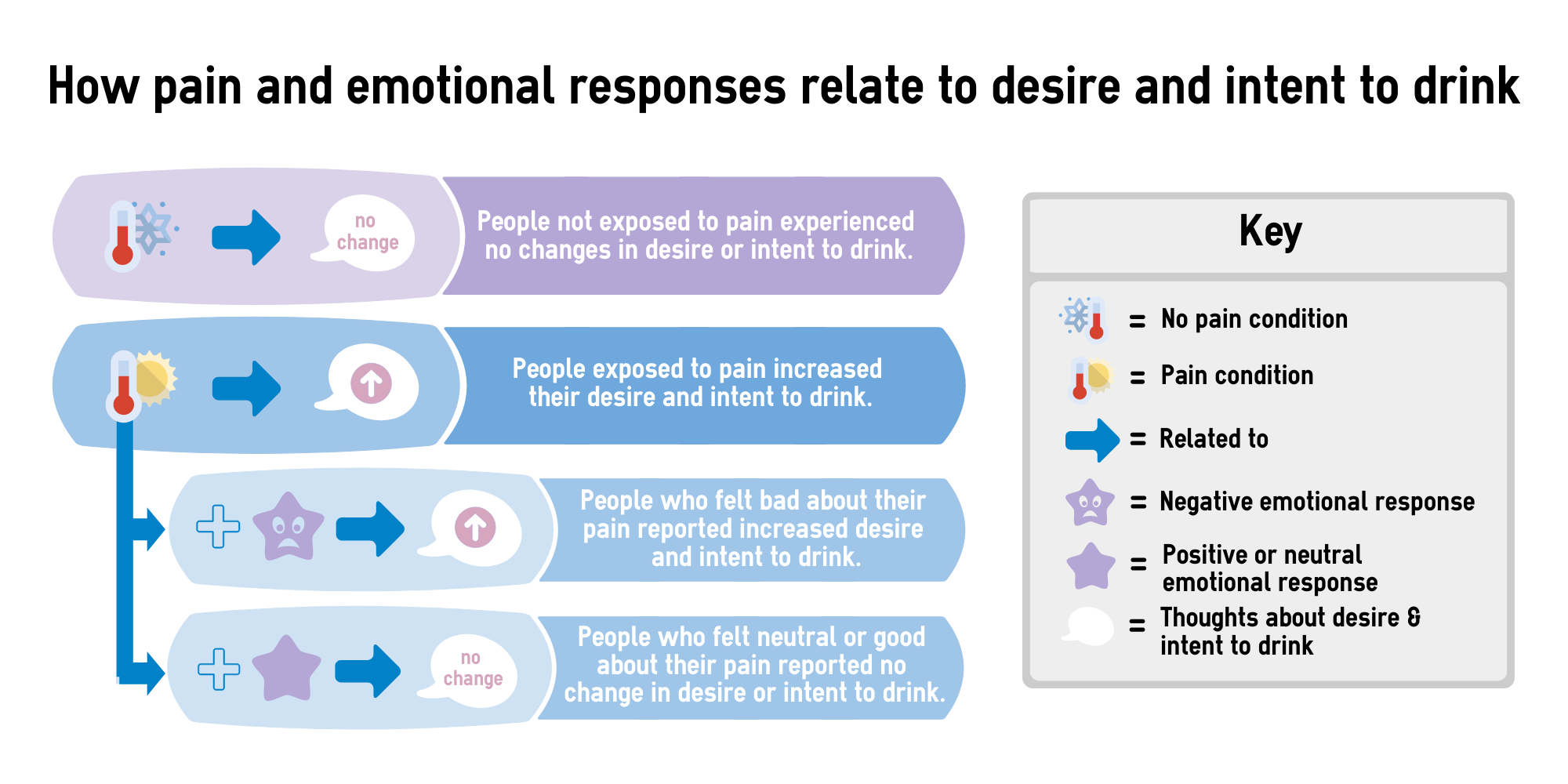The DRAM, Vol. 14(4) – Pain, emotional responses, and alcohol-seeking
Approximately 25 million American adults suffer from daily experiences of pain. Self-reported pain severity is related to increased risk for alcohol use and alcohol use disorder. This week, the DRAM reviews a study by Dezarie Moskal and colleagues that explores how emotions might influence the relationship between pain and alcohol-seeking cognitions (i.e., urge and intent to drink).
What is the research question?
What aspects of emotional reactions contribute to the association between pain and alcohol- seeking cognitions?
What did the researchers do?
The researchers recruited 61 participants from an undergraduate university.1 At initial assessment, all participants reported current alcohol use,2 desire to drink, intent to drink, and emotional state (i.e., positive affect, such feelings of interest, alertness, and strong, and negative affect, such as feelings of distress, irritation, and being upset) on the Positive and Negative Affect Schedule. Participants were randomly assigned to a pain or no pain condition. In the pain condition, the researchers induced pain by applying capsaicin (i.e., a mixture of chili pepper and alcohol that temporarily sensitizes skin to heat) to a small area of the participant’s body and then applied heat. In the no pain condition, the researchers applied both water and room temperature heat to the participant’s skin. Participants were instructed to focus on the pain until test completion. After five minutes, participants in both conditions answered the same set of questions they answered during initial assessment. The researchers used hierarchical linear regression to predict the relation between pain and alcohol-seeking cognitions. The researchers used mediation analyses to learn how participants’ emotional experiences related to their pain, urge to drink, and intent to drink.
What did they find?
Being in the pain condition increased the desire and intent to drink.Negative affect acted as a significant mediator of this relationship (see Figure). In other words, people who experienced pain and also experienced a negative emotional response to that pain were more likely to report desire and intent to drink, compared to people who reported more neutral or even positive emotional responses to pain.
Figure. Participant’s emotional response to pain mediated the relationship between pain and alcohol seeking cognitions. Click image to enlarge.
Why do these findings matter?
Pain predicts alcohol-related problems, but not everyone who experiences pain develops an alcohol use disorder. Treatment designed to reduce negative emotional responses to pain might reduce alcohol-seeking cognitions. Emotion regulation interventions teach people to cope with negative affect using strategies like deep breathing, nonjudgmental awareness, and guided imagery.
Every study has limitations. What were the limitations in this study?
College students in a controlled laboratory environment might not respond to their temporary pain the same way that people with chronic pain do. People with chronic pain might use self-distraction strategies that reduce the influence on alcohol-seeking cognitions. In this study, that was impossible because the researchers asked participants to focus on the pain.
For more information:
The National Helpline offers free referral and information for substance use support services. Additional substance use and gambling-related support services can be found on The BASIS Addiction Resources page.
— Pat Williams
What do you think? Please use the comment link below to provide feedback on this article.
________________
1 Participants were eligible to be included in this study if they were between the age of 18 and 35, English-speaking, and reported moderate to heavy drinking (i.e. a score of 5+ for females or 7+ for males on the AUDIT-C). Participants were ineligible for inclusion if they reported current use of pain medication, current experiences of physical pain, or an allergy to chili peppers.
2 Participants reported alcohol use on the AUDIT-C and an additional three question set assessing frequency and quantity of past-year alcohol consumption.
